12 Apr 2017
National Servicemen’s Association of Australia
The Hon. A.L. McLACHLAN ( 15:31 :44 ): It was an honour to be invited to the memorial dedication service in Keswick on 17 March this year by the state President of the National Servicemen’s Association of Australia (NSAA), John Thorne ESM. The memorial gardens at the NSAA state branch headquarters on Surrey Road on that day were unveiled by the Governor of South Australia. The memorial, cast in bronze and embedded upon a large solemn stone:
… is dedicated to the 287,000 young Australian men who were conscripted into the Armed Forces as National Servicemen in defence of our country between 1951 and 1972. 212 gave their lives, and many thousands were injured, both physically and mentally. Lest we Forget.
This new memorial is the product of four years of hard work by state vice-president, Barry Presgrave, and many others. It is distinct from the cenotaph dedicated to national servicemen in Canberra by being the only memorial to list the names of all 212 conscripted men killed in the Indonesian Konfrontasi and in the Vietnam War. Each man’s name has been immortalised by being carved into bricks lovingly laid at the foot of the bluestone memorial. The National Servicemen’s Association of Australia, or ‘nashos’ as they are commonly known, was founded in 1987 and is the second largest ex-servicemen’s organisation in the country.
Our own state branch vice-president, Barry Presgrave, was the association’s inaugural president before becoming a long-serving state president in South Australia after the SA branch headquarters was established in 1993. In the ensuing decade, 10 sub-branches have been formed throughout the state. ‘Nashos’ can be distinguished from ‘diggers’ in that they did not make a voluntary decision to join the military. They did not have the option of choosing the military way of life and of considering the ethical consequences of going to war, or of discussing this life-changing decision with their loved ones. Their fate was instead determined by lottery.
The National Servicemen’s Association of Australia’s raison d’etre is to represent the 287,000 young men called up to serve in our Navy, Army and Air Force. It was founded in Toowoomba by the late Barry Vicary in response to injustices he witnessed inflicted upon many of our ex-servicemen and women. As members would be aware, the treatment of many returned soldiers from Vietnam was not our finest moment as a nation. Those men who had served in Malaysia and Papua New Guinea were told upon arrival home that they would be ineligible to receive repatriation benefits usually offered to returned service personnel, despite giving up two years of their life in defence of our nation.
Barry sought a better deal for these nashos, and in later years he widened the Association to include the first National Service Scheme in the 1950s. Some of Barry Vicary’s primary objectives were realised with the release of the Anniversary of National Service 1951-1972 Medal in 2001 and eligibility for the Australian Defence Medal being extended to national servicemen in 2006.
State branch vice-president Barry Presgrave was one of the men conscripted to serve his country in the first National Service Scheme. In 1956, he trained at Woodside and went on to serve for 32 years in the Citizen Military Forces with the 27th Battalion, the 4th Military Police Company, and the Adelaide University Regiment. Barry’s sense of duty is truly remarkable. He went on to devote 35 years to serving the community at SAPOL before retiring as a detective chief inspector in 1994.
It is because of the devotion to duty of the 287,000 young national servicemen such as Barry Presgrave that I rise to speak today. I express my gratitude for their service in the defence of our state and nation. I will leave you with the moving statement of purpose, which was read out to those in attendance at the memorial and dedication service:
This s tone and pathway with the gold pavers will give all who pause to read and contemplate reminders that there were times past when there were anxieties abroad in the nation that the strengthening of our a rmed f orces was a necessity.
Here are many names of those who as young men took up the challenges of National Service, who served faithfully, and who remain proud of that service.
Especially this is the place where the names of National Servicemen , who gave their lives in theatres of war , are displayed.
We honour them here.
We want their sacrifice to be remembered always.
Our nation is proud of them. We are proud of them.
View source
